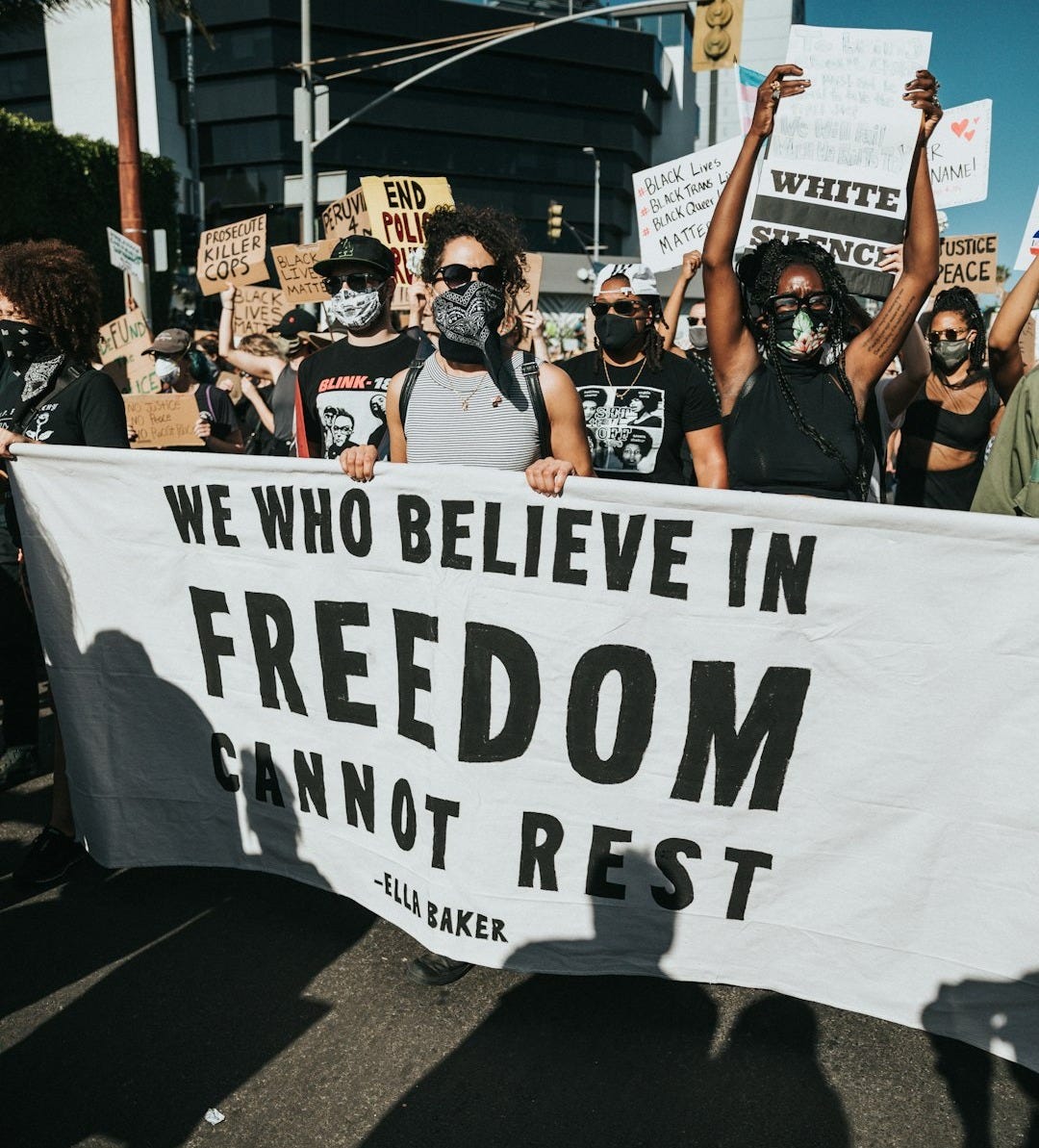Ditch the Paranoia Worries: You Need a Plan
We know we’re being watched.
Police bodycams. Drones over protests. ICE raids with facial recognition. Bosses are tracking your keystrokes at work. It doesn’t matter if you’re marching in the streets, defending your neighbors from deportation, or trying to win a union vote: they want to know what you’re doing. And they want you to hesitate.
But organizing under surveillance means we must plan.
You don’t need to be a spy, and you don’t need to live in fear. You just need to think strategically, protect your people, and keep your work focused. You need to know what to share, when to share it, and who you trust to build with.
Eyes in the Sky, Ears on the Line
Surveillance isn’t new. It’s just more advanced.
Let’s be blunt: the U.S. has always monitored dissent. The FBI had files on everyone from Martin Luther King Jr. to student newspaper editors. From wiretaps and mail tampering in the civil rights era to social media scraping and geofencing today, power adapts its tools but never changes its ultimate goal: control.
The illegal FBI COINTELPRO (COunter-INTELligence PROgram) was designed to dismantle the Black liberation movement, the New Left, and other rising worker and anti-imperialist formations from the inside out. It targeted groups like the Black Panther Party, SNCC, the American Indian Movement, the Weather Underground, and even mainstream civil rights organizers, and much of the time, it succeeded in repressing the movement. Not because they all made mistakes, but because the state waged a coordinated war on them, while much of the public looked away.
Fred Hampton was assassinated in his sleep. Organizers were harassed, infiltrated, jailed, and discredited. Political struggle was painted as criminality. The lesson? If your organizing gains traction, someone’s paying attention. Don’t panic.
Today, the tactics may look different, but they serve the same goal: control.
ICE scrapes utility records and social media to track undocumented people. Cops deploy drones over public gatherings. Even employers will install spyware to log your every click. Protest leaders find themselves doxxed, smeared, or subpoenaed. And the message, always, is: we see you.
And yet, people still fight. They still win. Because all surveillance does is raise the stakes.

What Security Culture Really Means
Security culture gets a bad rap.
To some, it sounds like secrecy for secrecy’s sake. To others, it conjures up images of gatekeeping or paranoia. But that’s not the case. What it demonstrates is intention.
Security culture is about boundaries and collective safety. It’s about reducing risk so we can take action without stumbling into preventable harm.
It’s things like:
Using Signal or encrypted email when discussing sensitive logistics.
Not sharing details until it’s time, only with those who need them.
Having roles, debriefs, and trusted accountability.
Gently vetting new participants and respecting people’s limits.
Loose networks don’t mean loose lips. We can stay open without being exposed.
The more public your work is, the more intentional your backstage needs to be. Not every project needs secrecy. But every organizer needs situational awareness.
Historical Lessons, Modern Tactics
From the Panthers’ free breakfast programs to Indigenous land defense camps to today’s abortion funds and student encampments, resistance has always involved logistics. And logistics require security.
Today’s tools have changed. We now deal with:
Facial recognition and license plate readers
Cell phone tracking, even when off
Automated keyword scraping on social media
Local police tapping into federal databases, and vice versa
Your strategy needs to reflect that.
You are not paranoid when they are actually watching. But you are irresponsible if you ignore it.
That means:
Leaving your phone off or at home when attending sensitive actions
Keeping organizing discussions off employer or school devices
Updating your privacy settings and knowing what apps track location or audio
Even Under Watch, We’re Still Organizing
Surveillance is real. Luckily, so is resistance.
Protest organizers are aware that drones and livestreams are now part of the landscape, so they plan routes, utilize communication trees, and keep press liaisons separate from legal observers. Mutual aid groups make backup plans in case state agencies crack down on food and supply chains. Immigrant defense networks have encrypted hotlines and rapid response teams.
The work adapts. The people persist.
Labor organizers do it too. Especially in anti-union workplaces, where surveillance is constant. They don’t post about campaigns. They meet off-site. They build relationships over time, not all at once. And when the boss tries to sniff them out, they shift tactics and keep pushing.
They’re watching. But that doesn’t mean they’re winning.
What matters is not whether you’re visible. It’s whether your work is resilient.
Staying Grounded is Staying Intentional
Being under watch wears on you. The point of surveillance isn’t just data collection. It’s got a sharp psychological edge that’s used as a weapon, too. It makes people second-guess, withdraw, and remain quiet when they would have spoken.
That’s why care work is security work. We need to be checking in with each other and making sure to debrief after actions. Practicing compassion and boundaries makes sure no one feels like the burden of safety or planning is theirs alone.
Fear doesn’t go away, but it stops being in charge.

Organize Anyway
Let them watch. Let them worry. We’re going to keep on building.
The most effective resistance this country has ever seen, from abolitionists to labor unions to queer uprisings, all happened under surveillance. They were tracked, harassed, and beaten down. And they organized anyway.
I’m not romanticizing the danger. I’m saying we must recognize it, so we can face it with clarity.
So if you’re starting something:
Get your people together.
Talk about boundaries.
Build systems that can handle stress.
Share knowledge across movements.
And always make room for growth.
Because the goal isn’t perfection.
It’s power.
And power grows when we continue to show up.
-Jay


